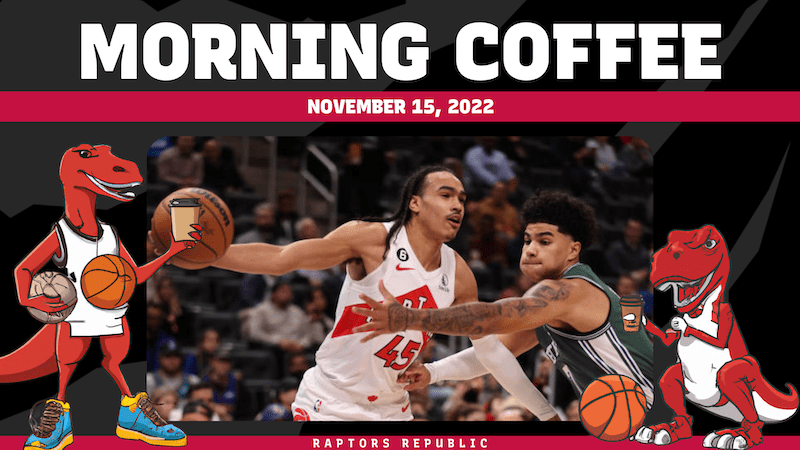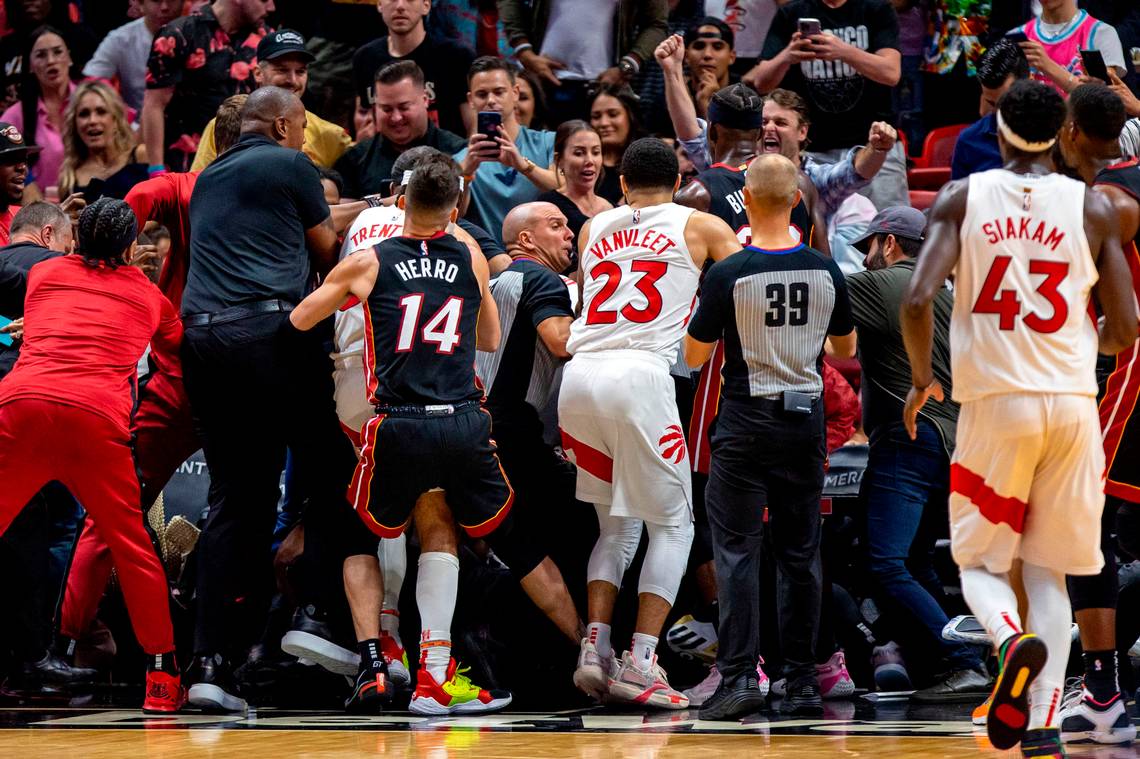The Battle of Thermopylae may be remembered for its heroism or its brutality or its geopolitical relevance, depending on your point of view, but it could just as equally be remembered for its cavernous mathematical imbalance. King Leonidas of Sparta commanded 7,000 Greeks, and King Xerxes of Persia commanded perhaps 100,000. The math was firmly in the invaders’ favour — unyieldingly so.
The Toronto Raptors face a similar mathematical gulf. On one hand, the Raptors are bricking their way to an effective field goal percentage of just 51.3, the fifth worst in the league. They don’t have a particularly analytically inclined shot spectrum, with few threes and few layups (even though Nick Nurse spoke before the season about wanting to add far, far more layups to the offensive diet). And they aren’t very efficient from one area of the floor versus another, shooting below the league average from the rim, the midrange, and deep as well.
On the other hand, the Raptors are allowing opponents to enjoy an effective field goal percentage of 54.9, the seventh-worst defensive mark in the league. Opposing teams take a huge percentage of shots from the rim and behind the arc, and even though they’re not particularly above league average in any individual area, such a tasty shot spectrum will generally result in efficient points.
The Raptors are facing an efficiency gap. All told, they have the third-worst efficiency gap in the league, subtracting their effective field goal percentage from opponents’ marks. In a way, every game must be fought uphill.
Or, here’s another visualization. On average, every opponent’s shot has the average efficiency of Luka Doncic (54.6 percent eFG) while every Raptor shot has the average efficiency of Jrue Holiday (51.2). That’s an unfair battle! And the efficiency gap is a fairly solid predictor of success in the NBA. The teams with the bottom 10 efficiency gaps in the league are 51-90 so far this season; the Raptors are the only one with a winning record. The teams with the top 10 efficiency gaps in the league are 77-58. Only the Golden State Warriors, Brooklyn Nets, and Minnesota Timberwolves are below .500 among that group, and it would be unreasonable to expect all of them to remain below .500 for the entire season.
There are countless explanations for Toronto’s difficulties, of course. Pascal Siakam is the numero-uno driver of Toronto’s creating efficient shots, with the Raptors securing an effective field goal percentage of 54.1 with Siakam on the floor (almost equal to opponents) yet falling to 49.2 with Siakam on the bench (oof). And Siakam of course has been injured. Interestingly, the shot quality for the team is practically identically whether Siakam is playing or not, so it’s only the ability to convert shots into points that falls without the star. (Another component, there, is that Siakam is one of the best hard-shot makers in the league.) At the same time, opponents’ effective field goal percentages are higher with Siakam on the bench, too. His injury has hurt both sides of the equation.
But Siakam’s absence isn’t the only factor in Toronto’s mathematical demise. Gary Trent jr. takes over a third of his shots from the midrange, 37 percent, which is good for 81st percentile leaguewide for his position. Scottie Barnes takes almost the same frequency, and far fewer triples. Similarly, Trent and O.G. Anunoby are on cold streaks from deep to start the season, below their usual elite efficiencies. Fred VanVleet is having the worst season of his career as a finisher at the rim, as is Chris Boucher. Christian Koloko and Precious Achiuwa are competing for the worst effective field goal percentage in the league.
Ultimately, Toronto doesn’t have a single high-efficiency player on the team at the moment. If you look at every team’s most efficient rotation player, the Raptors have the single lowest-efficiency efficiency leader in the NBA.
Among players with at least five games played and averaging at least 25 minutes per game, Toronto’s effective field goal percentage leader is VanVleet, with a mark of 52.7. The next lowest leader of any single team is Ayo Dosunmu, with a mark of 56.0 percent to lead the Chicago Bulls. Most teams’ leaders have percentages in the 60s, some rostering multiple such players.
The Raptors simply don’t have a high-efficiency play finisher to whom they can turn. In past years, that was Anunoby’s job, but he’s doing more creation for the Raptors and thus is sporting lower efficiency than usual. For many teams, it is a lob finisher at the center spot that scores with elite efficiency, but the Raptors don’t start a center, and of their bench center brigade, Boucher loves to take jumpers, Khem Birch is offensively limited, and Koloko and Achiuwa aren’t making anything.
This has been a consistent issue for the Raptors since employing high-efficiency wings like Norman Powell or Danny Green or Jonas Valanciunas at the center spot.
There is low-hanging fruit on an NBA court. Most teams have someone, or multiple someones, who can reach up and pluck it. The Raptors struggle with that, rostering no one who can turn a possession into automatic points. For the most heliocentric (and often best) teams, that player is also the one who initiates the plays. Think Doncic, Giannis Antetokounmpo, Steph Curry, or Nikola Jokic. And each of those stars leads a championship-contending team. Siakam is getting to that point, but he’s not there yet.
For the rest of the NBA, efficiency leaders are usually sidekicks. Low-usage players who finish possessions after teammates create advantages for them. The Raptors don’t roster a whole lot of those players. Plenty are great at finishing when others create for them — every member of Toronto’s traditional starting lineup, when healthy, for example. But those players all like to create for themselves, as well. None but Siakam and Barnes are efficient from behind the arc and at the rim, and both of those players do too much work in the beginning of possessions to have sky-high efficiencies by only taking the easy shots.
There are ways for Toronto to address its math imbalance. Its players could shoot more triples or finally fulfill Nurse’s preseason dream of getting to the rim. That’s difficult without either asking different roles from current players or finding a new addition to the roster. They could attempt more free throws and foul less on the other end — right now, the Raptors give up a higher free throw rate to opponents than they attempt themselves. They could play more conservative defense to force more misses, although that would eat into their current solution, which is to force turnovers and juice their offense by playing more in transition. Right now, the Raptors emphasize the possession gap, which they’ve been revolutionizing since last season as a means of winning in the NBA. And this season, they continue to force a huge number of turnovers on the defensive, commit few offensively, and crash the offensive glass to steal extra possessions.
But the current solution is only makeshift, a means of making up extra points that are already lost by the efficiency gap. No team has ever won a championship with a negative efficiency gap, at least not in the history of the Cleaning the Glass database, which extends to the 2003-04 season. Most champions were within the plus-3 to plus-5 range, which only three teams currently exist within this season. The Raptors are currently at negative 3.6 percentage points.
The Greeks of course lost to the Persians at Thermopylae. The numerical gap was too great. But after naval setbacks, Xerxes left Greece with much of his force, and the remainder battled another Greek army at Plataea. With more or less equal numbers of combatants on both sides, the Allied Greeks won this time around.
The Raptors have been building workarounds to the efficiency gap for several seasons now. This is their third in a row with a negative efficiency gap. If Toronto could finally solve the problem head on, by shooting more efficiently from the field and forcing more misses from opponents, that most of all would bring Toronto back to title contention. Then winning the possession battle would be a true weapon of domination, rather than a means of coming from behind.



